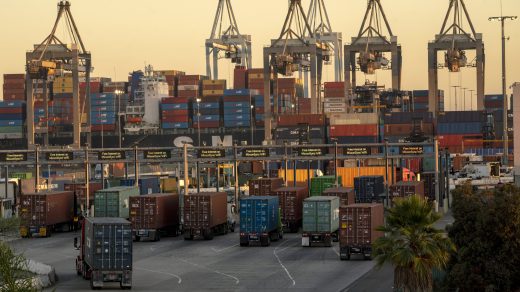Emerging Markets: New Opportunities and Risks for Investors
Introduction:
In today’s fast-paced global economy, investors are constantly seeking new avenues to diversify their portfolios and maximize returns. One such avenue that has garnered significant attention in recent years is investing in emerging markets. These dynamic economies offer a plethora of exciting opportunities for growth and expansion, but they also come with their fair share of risks.
Whether you’re a seasoned investor or just starting out on your investment journey, understanding the potential rewards and challenges associated with emerging markets is crucial. In this blog post, we will explore the key opportunities and risk management strategies that can help you navigate these uncharted territories successfully.
So buckle up as we delve into the world of emerging markets – where untapped potential meets calculated risk-taking! Whether you’re an adventurous investor looking for high-growth prospects or someone planning for retirement, this comprehensive guide will equip you with all the insights needed to make informed decisions in these dynamic economic landscapes.
The Risks of Investing in Emerging Markets
H2: Investing in emerging markets can offer enticing opportunities for growth and high returns, but it is important to recognize the inherent risks that come along with these investments. One key risk factor is foreign exchange rate volatility. Fluctuations in currency values can have a significant impact on investment returns, as changes in exchange rates directly affect the value of assets denominated in different currencies.
Another risk to consider is non-normal distributions. Emerging markets often exhibit higher levels of volatility compared to developed markets, leading to non-normal distribution patterns. This means that extreme events are more likely to occur, making it challenging for investors relying on traditional statistical models and assumptions.
Lax insider trading restrictions also pose a concern when investing in emerging markets. Limited regulations and enforcement mechanisms can make it easier for insiders to manipulate stock prices or engage in fraudulent activities, potentially resulting in losses for unwary investors.
Furthermore, lack of liquidity can be a major hurdle when investing in emerging markets. Smaller market size and limited trading volumes mean that buying or selling large positions may not be feasible without significantly impacting market prices. Illiquidity increases transaction costs and heightens the potential for price manipulation or difficulty exiting positions during times of market stress.
Difficulty raising capital is another risk worth noting. Companies operating within emerging economies may face challenges accessing funding due to underdeveloped financial systems or regulatory constraints. Limited access to capital could hinder their ability to expand operations or invest in necessary infrastructure, which could ultimately impact shareholder value.
Poor corporate governance practices present yet another risk factor associated with investing in emerging markets. Weak oversight structures and inadequate protection of minority shareholders’ rights increase the likelihood of fraud, mismanagement, and unethical business practices within companies – all factors that can erode investor confidence and negatively affect investment outcomes.
Increased chances of bankruptcy cannot be ignored when considering investments within emerging markets. Economic instability or sudden shifts in policy environments can impact the financial health of companies, leading to bankruptcies and potential loss of invested capital.
Lastly, political and social instability can also pose a significant risk for investors in emerging markets. Issues such as corruption, civil unrest, and changes in government policies can all impact market conditions and create uncertainty for investors.
In conclusion, while investing in emerging markets may offer attractive growth opportunities, it is important to carefully assess the risks involved and have a diversified portfolio. Investors must conduct thorough due diligence and stay informed about economic and political developments within these markets to make informed investment decisions.
Foreign Exchange Rate Risk
One of the major risks associated with investing in emerging markets is foreign exchange rate risk. This refers to the potential for fluctuations in currency values, which can have a significant impact on investment returns.
In emerging markets, currencies are often more volatile and prone to sudden changes compared to developed economies. This volatility stems from factors such as political instability, economic uncertainty, and limited liquidity in these markets.
When investing in an emerging market, investors must consider how changes in exchange rates may affect their investments. For example, if an investor purchases stocks or bonds denominated in a foreign currency and that currency depreciates against their home currency, it can erode the value of their investments.
Furthermore, foreign exchange rate risk also affects companies operating within emerging markets. Fluctuations in exchange rates can impact a company’s profitability by affecting its competitiveness and pricing power.
To mitigate this risk, investors can employ hedging strategies such as using derivatives or entering into forward contracts to protect against unfavorable movements in currency values. Additionally, diversifying investments across different currencies can help spread the risk associated with foreign exchange rate fluctuations.
Understanding and managing foreign exchange rate risk is crucial when investing in emerging markets to ensure optimal portfolio performance.
Non-Normal Distributions
When it comes to investing in emerging markets, one of the risks that investors need to be aware of is non-normal distributions. In traditional finance theory, returns on investments are assumed to follow a normal distribution, with most observations falling close to the average return and fewer observations deviating significantly from this mean. However, in emerging markets, this assumption may not hold true.
Emerging markets are characterized by high levels of volatility and uncertainty, which can result in non-normal distributions of investment returns. This means that the range of potential outcomes is wider than what would be expected under a normal distribution. As a result, investors may experience larger swings in their investment returns and face higher levels of risk.
Non-normal distributions can have significant implications for portfolio management and risk assessment. Traditional risk models that assume normal distributions may underestimate the actual level of risk faced by investors in emerging markets. This highlights the importance for investors to incorporate alternative approaches such as Monte Carlo simulations or fat-tailed probability distributions when assessing risks associated with their investments.
Additionally, non-normal distributions also pose challenges for asset allocation strategies. Traditional mean-variance optimization techniques that rely on assumptions about normally distributed returns may not provide accurate results when applied to portfolios containing assets from emerging markets. Investors should consider incorporating alternative methods like robust optimization or downside-risk measures into their asset allocation decisions.
Understanding non-normal distributions is crucial for investors looking to navigate the risks associated with investing in emerging markets. By recognizing the potential for non-normality in return patterns and employing appropriate risk assessment techniques and asset allocation strategies, investors can better position themselves to capitalize on the opportunities presented by these dynamic marketplaces while managing their exposure to inherent risks effectively.



